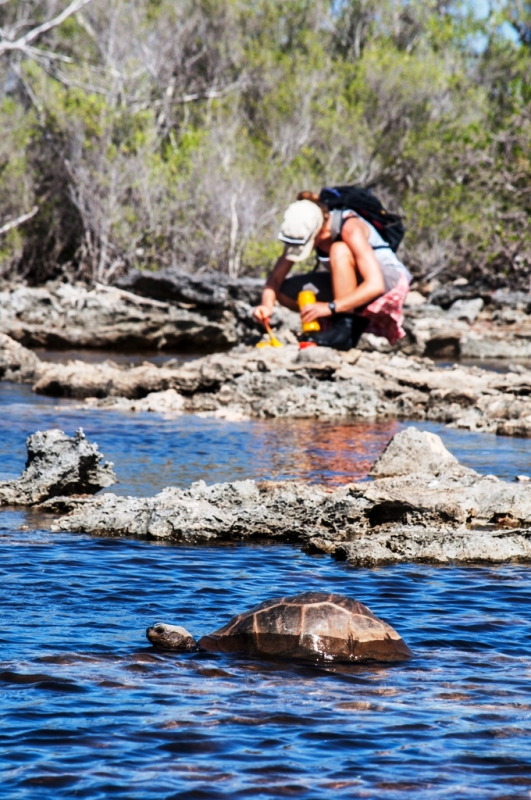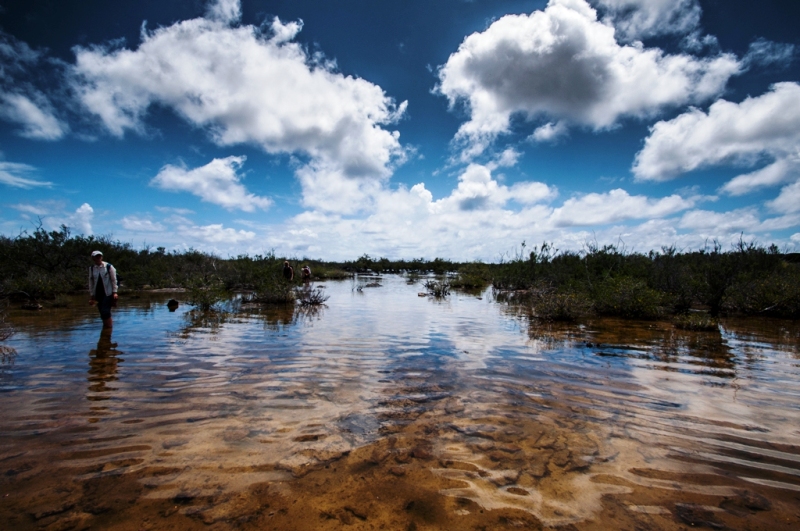Tortoise monitoring expanded on Cinq Cases expedition |13 February 2017

In December 2016 a team of six were deployed to the Cinq Cases region of Grande Terre Island on Aldabra.
There were multiple aims for this trip, starting with the completion of the standard tortoise and landbird monitoring transects.
The tortoise monitoring programme is currently under review with the aim to ensure that the data collected provides an accurate estimation of population size.
To do this the representation of certain habitat types is being increased, notably mangroves, Pemphis and open pool areas.
Currently there are three relatively short tortoise transects at Cinq Cases.
In December the team cut and marked a new longer transect from the end of the Coco transect (roughly from the centre of the island) to the inner edge (lagoon side).
This new transect traverses terrestrial mixed scrub habitat and mangroves, covering many open pool areas, including areas that become inundated with lagoon water at extreme high tides.
The team used natural pathways where possible to navigate through the dense areas, using machetes only when absolutely necessary. The work was very rewarding, especially upon arrival in the dense mangroves that skirt Bras Cinq cases.
The team also tracked some of the radio-tagged tortoises, which was difficult at this time of year as the tortoises have seemingly moved from their locations over the south-east season, probably because water is now much more widespread due to heavy rains.
The University of Zurich phenocamera (which takes regular images of the ‘greenness’ of the vegetation at a fixed point) was checked and all the images downloaded.
The team also conducted the exclusion plot monitoring, which comprises fenced off areas to prevent tortoise grazing to better understand the role tortoises play in driving the ‘tortoise turf’ ecosystem.
The team found a marked difference in the vegetation between the exclusion plots and the control areas, particularly in the wet season. The whole of the Cinq Cases area was alive, thriving on the ample rainfall, the pools were filled, the tortoises were out in force, even an abundance of baby tortoises was encountered.
The team observed one predation event whereby a land-crab (Cardisoma sp.) had captured and was eating a hatchling tortoise, a sad but interesting observation of the Aldabra food web.
To finish off the trip, the team collected rain gauge data and recorded the Green Turtle nesting activities along the coast beaches before heading back to station, very smelly but very satisfied with their work.





